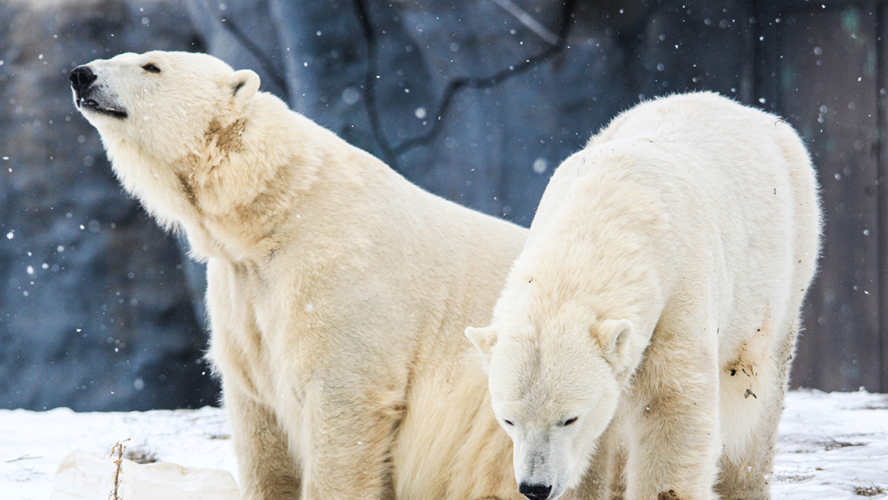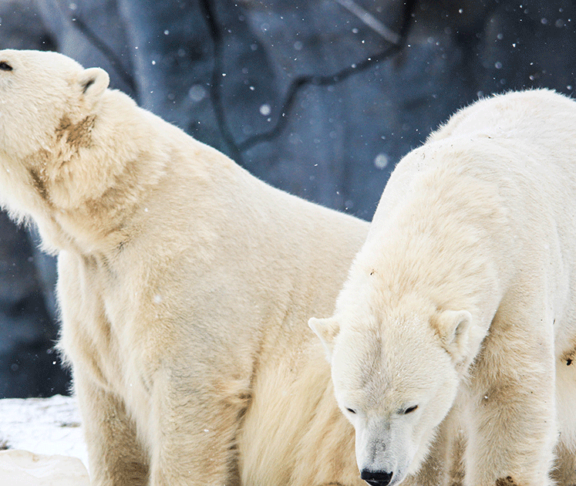In this post-COVID period, we’re seeing evidence of the impact of a significant global event on human health and wellness.
The devastating physiological effects of an infectious disease that emerged in what appeared to be out-of-the-blue has transitioned to potentially longer-lasting psychological challenges as workplace, economic, and societal stressors increase. As humans find ways to cope with the “new normal”, there’s been a conscious trend towards balanced lifestyles and overall self-care.
In a similar theme, wild animal and plant species have been facing dramatic pressures for many decades. With Highly Pathogenic Avian Influenza (H5N1) looming on the horizon as the seasonally driven infectious cases in commercial and wild birds begin appearing, we’re reminded of the delicate balance between living organisms and their environments. World Wildlife Fund’s Living Planet Report 2022 identifies a “global double emergency” as inseparable biodiversity and climate crisis. In simple terms, as humans continue to alter the natural landscape, living things continue to respond to the ever-changing environments — not always with positive outcomes. The recent WWF report highlights a dramatic decline of almost 70 per cent of monitored wildlife populations around the world within the past 50 years. We should take note that it isn’t just wild animals and plants that are facing continuous threats; humans are subjected to a similar onslaught as our urbanized and plasticized world is having an impact
on our own wellbeing.
In simple terms, as humans continue to alter the natural landscape, living things continue to respond to the ever-changing environments — not always with positive outcomes.
As humans struggle to define and find their own happiness and wellness in today’s world, wildlife biologists and veterinarians are working to understand the impact of anthropogenic pressures on wildlife. In this respect, zoo-housed animals present an important opportunity to gather information that isn’t always easily accessible in the wild. Zoo professionals have access to a wealth of knowledge at the individual and species level, and from newborn to geriatric adult through the challenging reproductive years. This information has proven to be valuable in supporting wildlife monitoring and recovery plans.
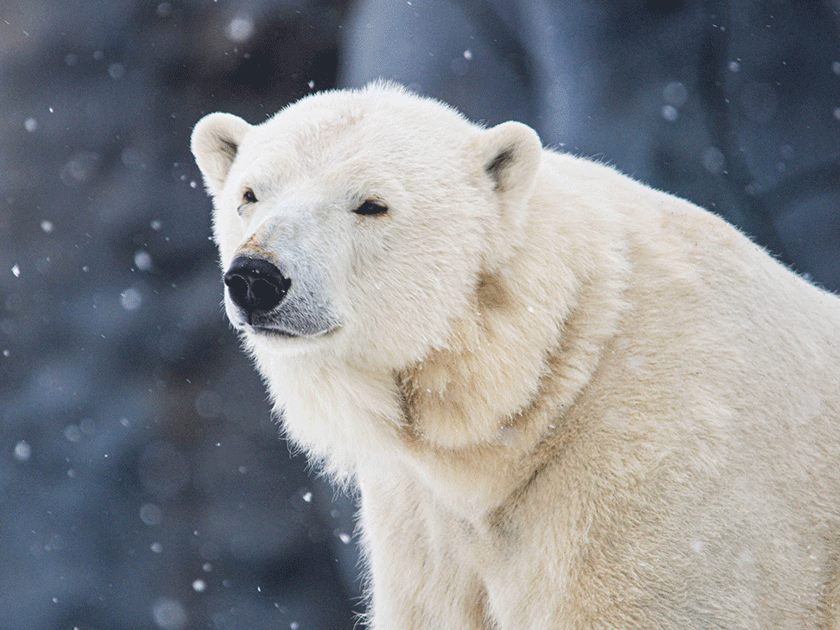
In recent decades, one of the critical factors being recognized in wildlife as with humans is that our understanding of wellbeing continues to grow, particularly the interconnectivity of physical and psychological health. Toronto Zoo’s Wildlife Science team is embarking on a holistic approach to animal wellbeing that takes into account the health and wellness of our animals throughout the different stages of their complex lives. Under the four pillars of Wildlife Health, Nutrition, Welfare, and Care, our teams work together to build an interdisciplinary platform for assessing, mitigating, and enhancing animal lives at our zoo. Plans for preventive health, naturalized nutrition, behavioural enrichment and training, and specialized care ensure that the diverse species and individuals will get the necessary support to live long, enriching lives.
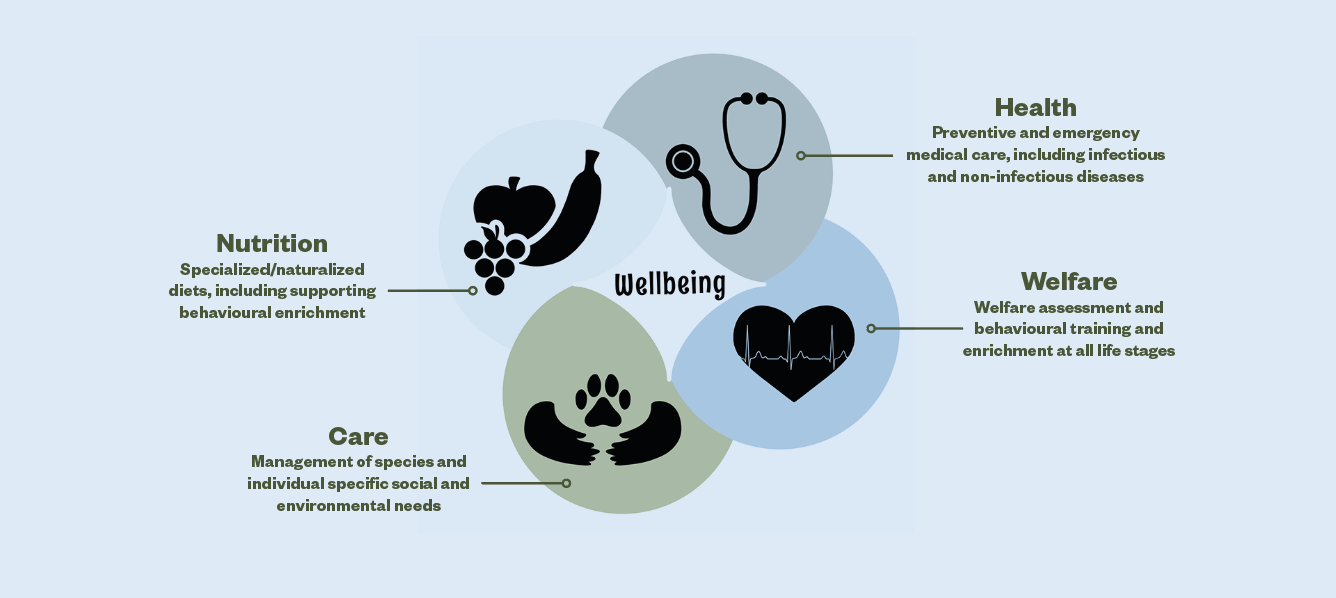
As a Canadian zoo, there’s an acute awareness that northern species, such as polar bears, may face more serious threats in the coming decades than other regions of the globe as their environment responds more dramatically to the climate crisis. Emerging infectious diseases are always a significant concern but with the predicted increase in ambient temperatures, this is layered with the additional stressors of habitat alterations, nutritional resource depletion, and more. Zoo professionals can play an important role in supporting these animals while learning about their innate biology and ability to cope with the environmental challenges that they face.
Toronto Zoo Experts Share Insights on the Four Pillars of Animal Wellbeing
Q&A
Dr. Nic Masters
Director of Wildlife Health, Toronto Zoo

What do we mean by ‘health’, regardless of the species of animal?
As veterinarians we think of ‘health’ as an absence of illness or injury or any disease process. Traditionally, it has strong physical connotations, although we’re thinking about the mental state of animals too, when we assess their health. We really need to approach wellbeing in a holistic manner — as we do for people — because welfare states are an amalgamation of multiple components. Our goal is to optimize the health of the animals in our care in zoos, physically and mentally, and continue to learn new and improved ways of so doing.

Do we see health issues in polar bears in zoos and in the wild?
Yes, we do. It would be nice to think that we were able to prevent all illness in the animals under our care, but this is not realistic — animals get sick just like people do. The more we imitate the conditions under which they have evolved to thrive in the wild the better. Our efforts to understand and promote optimal health of polar bears in zoos can help us better understand, and mitigate, the risks to their health in the wild.
Q&A
Maria Franke
Manager of Welfare Science, Toronto Zoo

Can you tell us what animal welfare is and why it’s important? Has this always been prevalent in managed settings?
Historically at the Toronto Zoo, animal welfare has always been top priority. We now have a more standardized program to give more formal welfare assessments, ensuring we have a science-based approach to the wellbeing of our animals. Instead of saying, “I think that animal is doing well,” let’s do some research, and assessments and we can be certain animals are doing well in specific areas, and not as well in others. Overall, the wellbeing program is about allowing our animals to thrive and allows the zoological community to evolve and improve best practices.
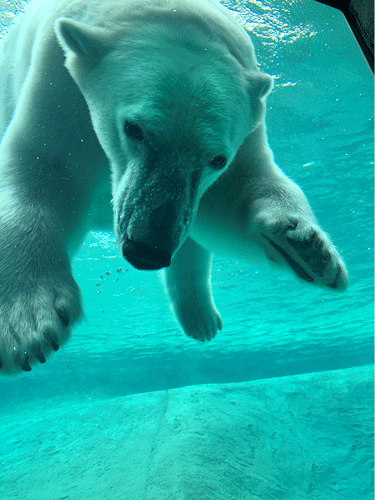
The overall welfare of an animal is on a continuum of good to poor and it’s always moving, affected by various internal and external factors. Our polar bears are a good example because they have more stressors during the breeding season which is normal and natural. We see breeding behaviours, anticipatory behaviours, the males getting upset because they can’t be with the females — but knowing this empowers us to act as needed for the welfare and wellbeing of the animals.
Zoos are conservation, education, and research organizations. It’s all about assessing the welfare and wellbeing of our animals based on the five domains: good nutrition, good environment, good healthcare, allowing the animals to have species specific behaviours, and the mental domain are key. Toronto Zoo started a formal monitoring and assessment plan to have benchmarks for individuals and species as a whole; initiating an individual-based research study to understand behaviours in one animal in the hopes of developing specialized enrichment plans.
Q&A
Sarra Gourlie
Manager of Nutrition Science, Toronto Zoo

What do polar bears eat and does their
diet change throughout the year?
The Toronto Zoo provides polar bears with a seasonal diet to mimic the ebbs and flows of their wild diet. Polar bears are lipivores, seeking out fat, and the macronutrient content of their diet changes seasonally, in line with the formation and retraction of sea ice. The bears are allowed to gain body weight during certain times of the year, which is then decreased to mimic the seasonal flux. Polar bears in the wild gorge on fatty portions of seals during the sea ice formation, but they experience decreased caloric intake when the sea ice retracts. The Toronto Zoo provides the bears with fish, meat diet, kibble with high fat content, alternative fat sources, and fruits and vegetables as enrichment.

Why is it important to mimic the natural ebbs and flows of their diet in the wild?
It’s essential to mimic the natural diet of polar bears in the wild as it impacts their overall health and reproductive success. By studying bears on a seasonal program, institutions can gain a deeper understanding of their physiology, particularly the hormones that regulate feast and famine periods. Researchers can collect data from voluntary blood draws, which helps to monitor the bears’ health and identify potential health problems. Polar bears require body fat for survival, particularly females who need a minimum of 20 per cent body fat to reproduce successfully. If the bears don’t have enough body fat, they could starve, and females may not be able to maintain the pregnancy. The formation and retraction of sea ice is becoming shorter, which means polar bears in the wild have less time to accumulate the body fat they need to survive and reproduce. By providing polar bears with a seasonal diet, institutions can monitor their caloric intake, understand their physiology, and ensure their overall health and reproductive success.
Q&A
Lindsay Paats
Wildlife Care, Toronto Zoo

What are some of the challenges that come with working with such seasonal animals in a managed care setting?
Polar bears, because they live in a harsh environment, take a lot of their cues from nature. In the wild, they gorge feed on seals when there’s sea ice — when there isn’t sea ice, they spend their time eating whatever they can. These feast or famine cycles lead to drastic ups and downs in weight that are normal. This is particularly evident in polar bear moms who can undergo eight months of fasting while also feeding their young. That’s how they’re built, but this flexibility is dependent on a fatty diet.
In addition to the effects of the breeding season, where the challenges of having intact male and female polar bears in the same vicinity become evident, our climate at the Toronto Zoo is very different to what it would be in the wild. For example, if there’s a warm spring, they may appear hungrier, so we alter their feeding plan to increase their weight faster. Thanks to the welfare team, we’ve become experienced at observing the bears to best manage their needs.
Disease is also a major challenge — as the climate warms,
diseases are becoming more prevalent in the wild — something we’re monitoring at the Toronto Zoo to best care for our endangered animals, especially the Tundra species like polar bears. This was seen by researchers in Churchill, Manitoba — noting the wild polar bears exhibited an abundance of disease not previously seen in the species. There’s no doubt this is related to climate change.
Our mission at your Toronto Zoo is to connect people, animals and conservation science to fight extinction. Find out more about our commitment to saving wildlife and wild spaces.
